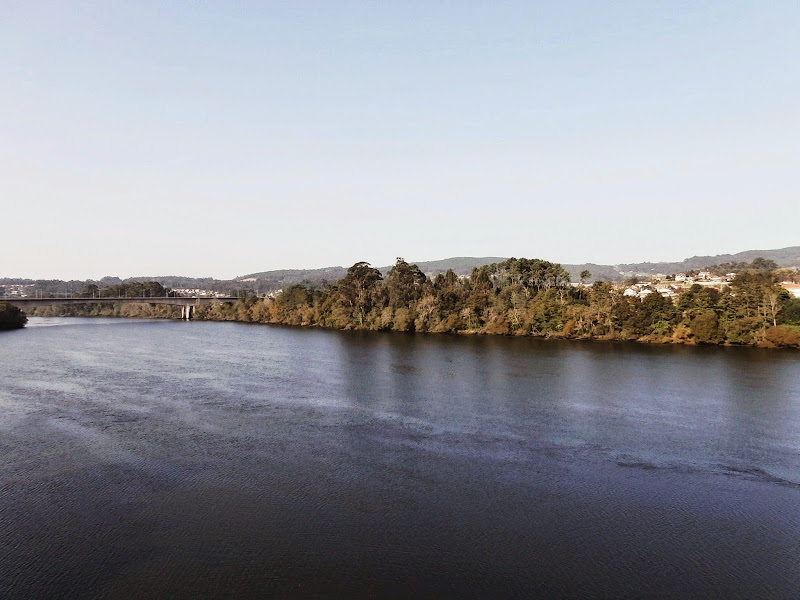Here we start the route of The Portuguese Way in Galicia. From Tui in the Miño to Santiago de Compostela.
Today we will pay attention to the arrival of pilgrims to Tui, in Galicia, in Spain. We will walk some first steps of The Way and also we will see the riverside promenade of Tui.
Pilgrims enter Galicia/Spain through the International Bridge that links Tui with Portuguese town of Valença do Minho. It was the only way for road traffic until a few years ago. The River Miño was crossed by barge before the construction of the International Bridge.
The bridge deserves that we stop to pay it a visit.
The bridge is seen from the Spanish side of the river. We can see behind the bridge a part of the fortress of Valença do Minho and the two towers of the church.
42.037610, -8.648137
The design for the construction of the International Bridge was the work of the Spanish engineer Pelayo Mancebo in 1879. It was built between 1881 and 1884 and it was inaugurated on 25 March 1886. The bridge was unique because of the fact that has three uses: road traffic, railway on the upper platform and it has a walkway. It was going to be a whole metal bridge but the construction company changed the original design to build stone pillars.
Eiffel, his engineering firm submitted a bid in the auction to build the bridge. Maybe this is why it is erroneously said that it is the International Bridge of Eiffel.
We are going to visit the bridge now.
The bridge is seen from the Spanish bank.
Customs post in the Spanish side.
42.037408, -8.648274
We are on the walkway. We can see the Miño downstream and the bridge of the highway that connects both countries.
42.036942, -8.647748
This is the pedestrian walkway.
We are in Portugal now. This is the customs post.
42.035055, -8.645205
We are retracing our steps and looking towards Tui. The Cathedral highlights at the top of the town.
42.035583, -8.645865
They needed 1,504 tons of iron to build the bridge.
The River Miño.
42.036525, -8.647099
We can see in the centre of the picture the
Cathedral of Tui, to the left part of the Parador
de Turismo. We see to the right Chapel of San Telmo.
We are approaching the Spanish side. We can see to the left of the picture the exact spot where people that crossed the river on boats in the past disembarked. It is the port of Lavacuncas, today called La Fábrica.
42.037195, -8.647947
After the visit to the International Bridge we start the route of the Portuguese Way. We must mention here that this is also the starting place of the Roman Road XIX in Galicia as well as a path called Senda PR G 19 along the River Miño.
The Way starts here 42.037528, -8.648271 a road section. It is N-551 road (or Avenida de Portugal), turns right towards the Parador de Turismo and returns to the river bank. Here: 42.040187, -8.644607
We are going to take another way now. We descend down the river by a path and get to Lavacuncas.
This is the area where the port of Lavacuncas was. Pilgrims disembarked here and then continued The Way from Tui to Santiago de Compostela. This is also the starting point and the finishing line of the Sendero PR G 19.
42.037862, -8.647400
Around 200 metres further on we can see this monument. It has the pilgrim emblem, a scallop shell. The monument marks the area where Lavacuncas was. We are beside the Rowing and Canoeing Centre of Tui.
42.039431, -8.645590
The International Bridge and the fortress of Valença do Minho are seen from the Rowing and Canoeing Centre of Tui.
42.040178, -8.644525
Click here to view Part 2























No comments:
Post a Comment